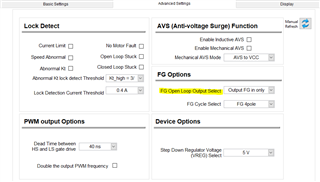Other Parts Discussed in Thread: MCF8316A
Hello,
Our customer asked about DRV10975 RM parameter related questions .Please give him answer and comments about his questions in below.
1. He found motor rotation stop at the beginning of the rotation in case he sets slightly higher RM value e.g. RM=5.6ohm against RM=4.7ohm in typical. Do you tell him any particular point or phenomenon to check more in the evaluation.
2. Could you also tell him specific parameters that impact on this issue or which characteristics check carefully.
3. He found out analog speed control response delay when he optimized the lead angle. Could you tell him any potential reason why the analog speed control response was delayed.
Best regards,


